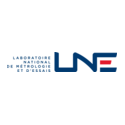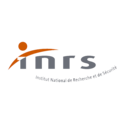In short
Medical, respiratory and community face masks often contain nanomaterials like silver or titanium dioxide particles for added protection and fabric enhancement. However, this may raise health worries due to potential release of nanoparticles that could be inhaled. The RENAAME project creates tools to examine the presence of nanoparticles and their release from masks, improving our grasp of their environmental and health effects. This work supports safer, sustainable innovations in filtration materials.
Project description
The pandemic context has emphasised the necessity of having face masks (surgical, respiratory protective and community masks) with filtration performance that does not compromise on comfort. The addition of nanomaterials represents a major innovation to meet this need but may also raise health concerns related to potential inhalation exposure to nano-objects, their aggregates, and agglomerates (NOAA). Consequently, several commercial products claiming biocidal/virucidal properties based on the use of silver have raised various questions at the national and international level regarding their safety, leading to their withdrawal from the market shortly after release. More recently, the presence of TiO2 NOAA in masks has been demonstrated, even when no specific information was provided on their packaging. This emerging area of concern, however, lacks methodological development regarding the assessment of inhalation exposure to NOAA during mask use.
During the RENAAME project, we develop a methodology to assess the potential release of nanomaterials, whether declared or not, to evaluate inhalation exposure under realistic usage conditions. The uniqueness of the RENAAME project lies in developing and validating an approach that combines the analysis of mask constituent materials and potentially emitted aerosols. Although pre-normative work is ongoing (ISO/TC229 and ISO/NP TS11353) on this subject, the number of dedicated scientific studies remains very limited.
The proposed methodology seeks to quantify the mobile fraction of NOAA in masks by identifying and localising NOAA in the fibres using transmission electron microscopy. In addition, we evaluate the released fraction in aerosol form by using a mobile anthropomorphic head associated with an artificial lung capable of producing respiratory cycles representative of different levels of effort under representative usage conditions. This assessment is carried out on masks that commercially declare the presence of nanomaterials with potential health risks (in this project, NOAA composed of TiO2 and Ag), as well as on masks that make no explicit use of NOAA. Determining these two fractions will ultimately lead to a classification of different types of masks based on their emission potential.
Sciensano's project investigator(s):
Service(s) working on this project
Partners




